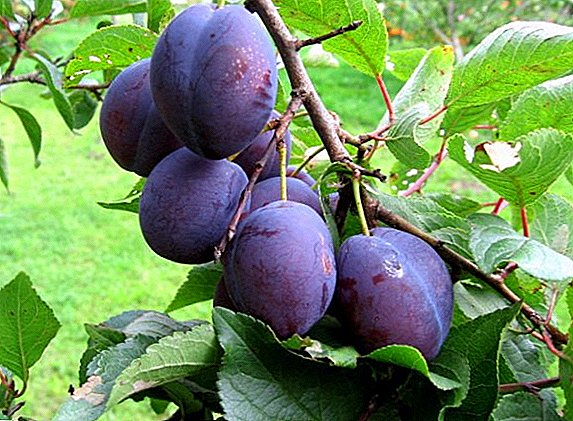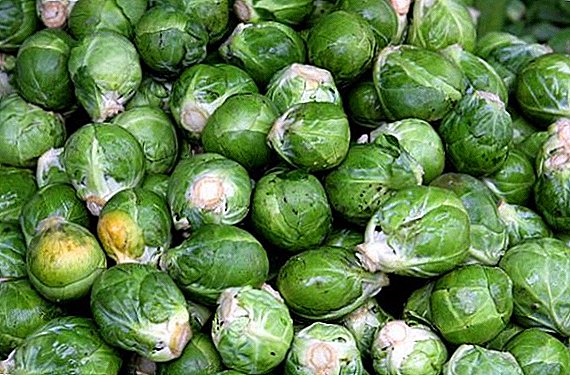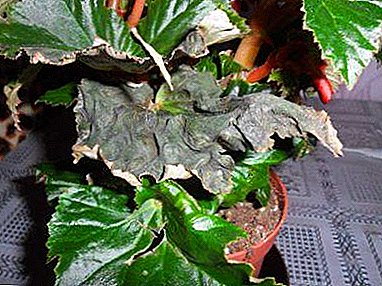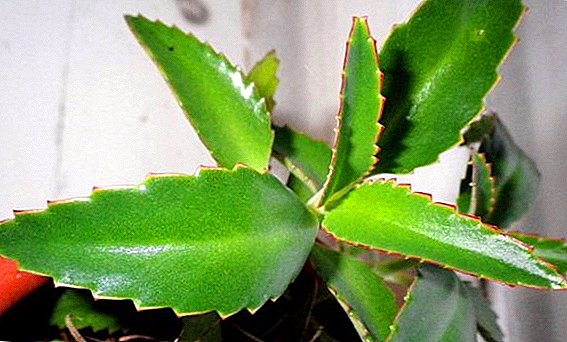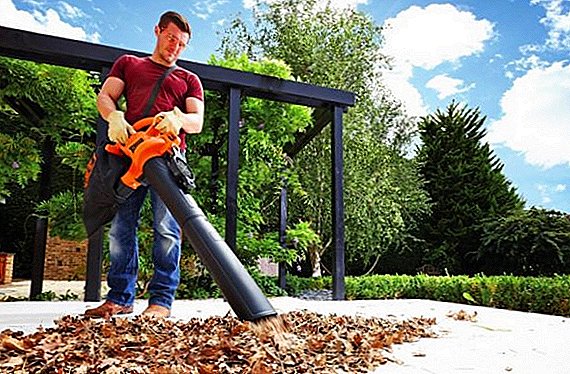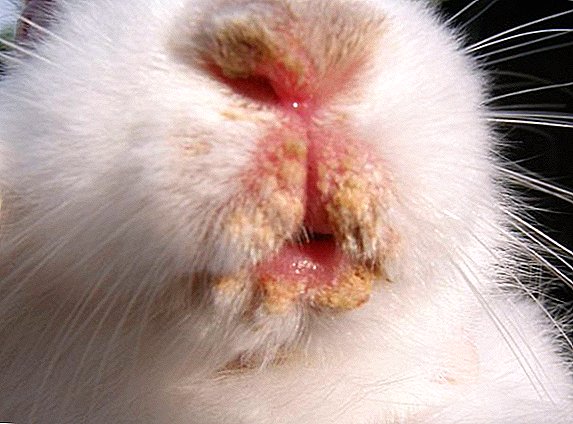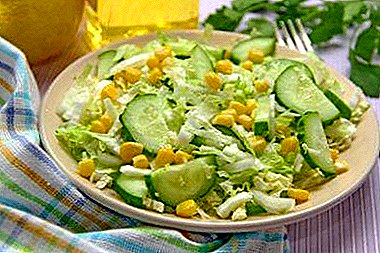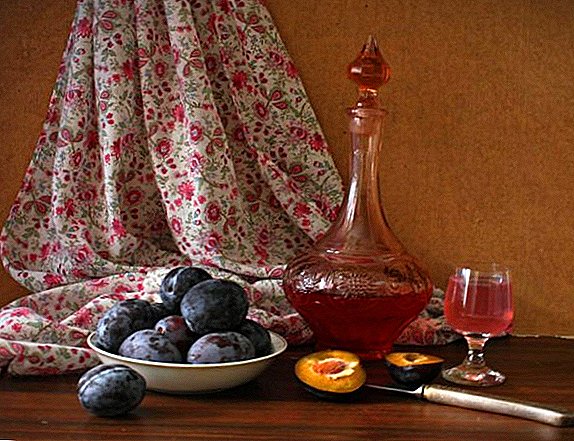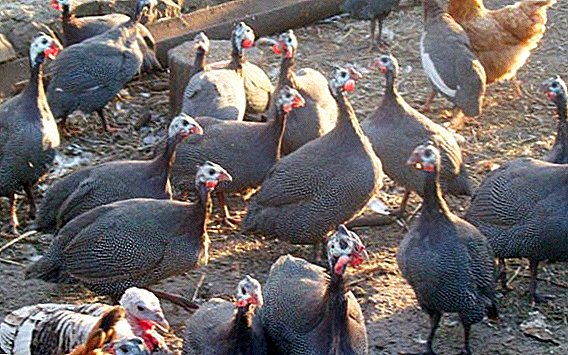 Breeding guinea fowls has become a popular poultry industry relatively recently. One of the most common - the French guinea fowl broiler (gray-speckled).
Breeding guinea fowls has become a popular poultry industry relatively recently. One of the most common - the French guinea fowl broiler (gray-speckled).
These birds are well adapted to frost, and their meat has high dietary and taste qualities.
To get the most out of growing, you need to know how to properly keep these birds and what nutritional conditions they need.
History of origin
Crosses of gray-speckled guinea fowl are bred in France. The main goal of breeders was the breeding of birds with good meat qualities. Broiler guinea fowl reaches a weight of 4 kg.  At the same time, the bird fully preserved the high egg production rates inherent in gray-speckled guinea fowls.
At the same time, the bird fully preserved the high egg production rates inherent in gray-speckled guinea fowls.
Did you know? During the reign of Emperor Caligula, the guinea fowl was declared sacred birds. Only very rich Romans could afford to eat them.
Description and appearance
Exterior of guinea fowl broiler gray-speckled:
- The main feature is the blue plumage on the neck of the bird. The main color is gray-speckled or pearl. Plumage thick. The color may vary from darker shades of gray to moderate gray;
- the body is large, oval. The body length is 1.5 m. When walking, the body is held vertically. The chest carina is weakly expressed, the chest is wide, convex. Not plucked small legs of gray color. The tail is small, directed downwards.
- The head is small, rounded with a bone shade of a dark shade. The neck is elongated, thin. There are small earrings scarlet.

Other characteristics
Productivity:
- the weight of males is 3-3.5 kg and the weight of females is 3.5-4 kg;
- meat yield reaches 80-90% from the carcass;
- egg production - 120-130 eggs per year;
- egg weight - 45 g;
- shell color - cream;
- egg fertility is above 90%;
- hatchability of eggs - 70-80%;
- survival rate of young stock - 95-98%.

Necessary conditions for the content
Guinea fowl - unpretentious in the nutrition and maintenance of birds, which are quite self-sufficient for most of the food on the summer range. Broiler content requires a high-calorie diet and a sufficient amount of minerals. In the wild, guinea fowls live in undergrowths and shrubs, feeding on vegetation, berries, seeds, and insects. Guinea fowls do not harm the beds, because they do not loosen the soil in search of food, and benefit by collecting insect pests.
The peculiarity of the French cross - aggressiveness to strangers. Therefore, guinea fowls should have a bird house separate from other birds. For a herd of 5 females you will need 1 male.
Read also about the breed of guinea fowls Zagorsk white-breast.
Arrangement of the house
Wild guinea fowl live mainly in Africa in a very hot climate, but despite this, birds tolerate low temperatures perfectly.  Requirements for the house:
Requirements for the house:
- accommodation - the sunny part of the site. It is desirable that the house was protected from the north winds by other buildings or trees. The area of the window - at least 10% of the total area of the walls, should go to the south side - birds love to bask in the sun;
- 1 bird must be at least 0.5 square meters. m square. The room should be insulated and protected from drafts - processors are susceptible to drafts. Air temperature should be at least +15 ° С. Be sure to have ventilation;
- the height of the perches is about 40 cm above the floor. Perches are round or square slats with a section of 4x5 cm. The distance between adjacent slats is 30-40 cm;
- nest settles in the most shaded part of the house. Size - 40x30x30 cm. It should be as natural as possible. It is possible to take eggs from the nest only when there are no guinea fowls in the house, leaving several eggs in the nest, otherwise the birds will be carried elsewhere. One nest is enough for 6-8 females;
- the thickness of the litter on the floor is at least 20 cm. Ingredients: peat, sand, sawdust, straw. Please note that birds can peck sawdust, and then the litter will have to pour. Replace contaminated litter is necessary at least 1 time per month;
- artificial lighting is mandatory for winter time, because the birds are carried only during the daytime, and their reproductive apparatus reduces its activity in the dark;
- feeders - 1 to 5-6 individuals. The feeder is filled to 1/3 so that the feed does not crumble. Form - oblong, so that large birds do not interfere with each other.
Important! The house window should be glazed and covered with a metal grid to prevent attempts to fly out the window, otherwise the birds can get hurt.
Clean and disinfect the room
In order for the birds to be healthy and have maximum productivity indicators for the population, it is necessary to take care to minimize the incidence. The source of infection can be droppings, parasites, worms and other pathogens.  General requirements for disinfection:
General requirements for disinfection:
- cleaning the house from litter - at least 1 time per quarter;
- disinfection from parasites - once every six months;
- general cleaning and disinfection with the treatment of perches, walls, etc. - at least 1 time per year;
- wash water bowls and feeders - weekly.
Nests and equipment are treated and cleaned in the open air. Metal surfaces are treated with a gas torch. Walls - lime mortar. Perches are stained. Drinkers and feeders are disinfected with a 2% solution of soda with calcium and water.
Complex disinfection with modern means affects the fungus, viruses, sources of infection and bacteria.
Among the most popular drugs:
- "Ecocide C";
- "Virucide";
- "Glutex".
Important! When processing, be sure to use personal protective equipment. - gloves, respirator.
Walking yard
The size of the covered courtyard of the covered type (grid with a roof) must be at least 2 square meters. m 1 bird. The floor of such a courtyard is carpeted with a bed of sawdust, hay, sand, peat, straw. In such a walk, birds can be in winter or in rainy weather. The height of the grid - 2-2.5 m.  Free range should correspond to the natural landscape as much as possible - the undergrowth zone: shrubs, glades, tall grass. Guinea fowls in the shrubs can rest and make nests. Birds adore well-lit areas and can stay in the sun for a long time. Good eat berries, plant seeds and insects. Mandatory source of clean water on the range - drinking bowl.
Free range should correspond to the natural landscape as much as possible - the undergrowth zone: shrubs, glades, tall grass. Guinea fowls in the shrubs can rest and make nests. Birds adore well-lit areas and can stay in the sun for a long time. Good eat berries, plant seeds and insects. Mandatory source of clean water on the range - drinking bowl.
How to endure winter cold
Guinea fowls tolerate winter cold and do not need additional heating of the house. It is enough if it is insulated and has no drafts. The house should be dry, because high humidity damages birds. Walking in the fresh air in winter does not harm the state of health of birds.
Learn more about winter keeping and feeding of guinea fowls.
What to feed
Throughout the daylight hours, guinea fowls feed on any feed. The diet includes:
- grain masks;
- industrial feed;
- dry cereal mixtures;
- greenery;
- food waste.
Dry cereal mixtures include corn, oats, wheat, millet, barley. It is very simple to adjust the composition of the grain mixture: you need to see which bird grains peck badly and exclude them from the diet. The ratio of grains and green fodder should be 1: 1. Daily feed rate - 200 g per 1 bird.  If the birds are kept in cages, then it is necessary to add grass meal, meat and bone meal, animal proteins to the diet. The power scheme in the cells is four times. Additionally, shells, salt, and chalk are included in the diet to supplement the diet with minerals. In a separate trough place small gravel.
If the birds are kept in cages, then it is necessary to add grass meal, meat and bone meal, animal proteins to the diet. The power scheme in the cells is four times. Additionally, shells, salt, and chalk are included in the diet to supplement the diet with minerals. In a separate trough place small gravel.
Important! When fattening meat for slaughter poultry can be carried out at 3 months of age. At this time, guinea fowls reach their maximum weight.
Adult flock
The optimal feeding system for an adult herd is the combination of various feeding methods.
Power scheme:
- without walking - 4 times a day;
- with walking - 3 times a day.
On walking in the period of abundance of grass and insects, guinea fowl can provide 50% of the diet.
The diet of an adult guinea fowl includes:
- wheat - 25-30%;
- barley - 15%;
- peas - 10-15%;
- corn - 20-25%;
- soybeans - 10%;
- sunflower meal - 5%;
- fish meal, chalk, yeast, vitamins - 5%.
Fish meal and grain are especially important during the laying period, they provide the body with essential elements. Additionally, the diet should be germinated grain, chalk, shellfish. Wet mash is prepared in skimming or whey, it enriches the nutrition of animal protein. On the day of the mash should be about 20-30% of the total mass of food. The daily feed weight is about 200 g. The daily water intake is 250 g. You need to feed the bird at the same time so as not to cause concern. 
Chicks
The feeding scheme of chicks, depending on the stage of development, looks like this:
- Nestlings up to 1 month old are in the house. Since broiler guinea fowl belongs to meat types of birds, the optimal weight gain is provided by industrial feed according to the scheme: "Prestart" - "Start" - "Fattening" - "Finish".
- Daily chickens eat boiled finely chopped egg and curd. The feed rate is 10-12 g. The water rate is 3 g. On the first day, the chicks eat little, so the feed must be high-calorie.
- The diet of the first week - feed "Prestart", containing corn, soybeans, wheat, fish meal, vitamins and minerals necessary for growth and weight gain. It consists of antibacterial drugs and coccidiostatics that protect the chicken body from infections. Feed the chicks "Prestart" up to 10 days of age. The feed rate is 15-35 g. "Prestart" does not contain antibiotics or growth stimulants, therefore it is safe for livestock.
- The next 10 days, the chicks are fed "Start". The rate of feed - 40-75 g. The scheme of increasing the amount of food is given on the packaging with feed. "Start" is aimed at strengthening the immunity of the chick and the development of the skeleton. Compound feed in the diet of chickens does not negate the presence in it of fresh herbs, boiled eggs and cottage cheese. An excellent addition to the diet is germinated grain - about 10 g per 1 chick at the age of more than 2 weeks.
Read also about the incubation of chicken eggs and the care of chickens.
The task of "Fattening" - the formation of the muscle mass of the bird. At this time, the diet includes grain, oilcake, grass meal, fish meal. The feed rate reaches 125 g by the age of 50-60 days. The rate of water - 250 g
 Feeding schedule:
Feeding schedule:
- the first week - 8 times a day during daylight hours with an interval between feedings of not more than 2 hours;
- second week - 6 times a day;
- by the end of the first month of life - 5 times a day;
- the second month before slaughter - 4 times a day.
Wet mash is given 1 time per day and consists of crushed grains, fish meal, dairy products. Hash prepared immediately before feeding. The feed rate is about 30 g. At the finishing stage of poultry maturation, mixtures with the presence of cheese protein are mandatory. Their presence in the diet should be at least 15%. Feed the birds only feed can not be. Guinea fowl receives less essential amino acids, grows worse and gains weight more slowly.
Did you know? Guinea fowl, like geese, begin to roar with the whole herd, and so that lays their ears, only when they see the danger: a dog, a cat or even a stranger.
Advantages and disadvantages
The advantages of guinea fowl broiler gray-speckled:
- large weight - up to 4 kg;
- good egg production - up to 130 large eggs;
- high nutritional quality of meat and eggs;
- quick mass gain in young animals;
- birds rarely get sick and tolerate cold well;
- are an ecological way to control pests of the garden / vegetable garden;
- unpretentious to the conditions of detention;
- picky in nutrition.
Discover species of wild and domestic guinea fowls.
Disadvantages:
- birds do not tolerate high humidity;
- very noisy;
- aggressive towards strangers;
- for egg-laying they choose very secret places and change them as soon as they notice the danger.
Video: French broiler chicken fowl
Poultry farmers reviews

To get a bird with high productivity, it is enough to provide it with minimal care and high-calorie food. It is also profitable to grow guinea fowls from an economic point of view - their eggs and meat are more expensive than chicken, and the cost of maintaining guinea fowls requires much less.


